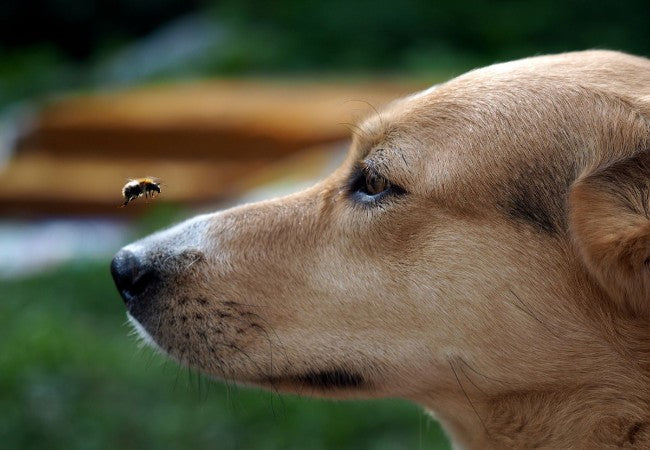5 Dangerous Bugs Your Dog Might Bring Indoors: A 2025 Veterinary Guide 🐶🚫

In this article
5 Dangerous Bugs Your Dog Might Bring Indoors: A 2025 Veterinary Guide 🐶🚫
By Dr. Duncan Houston BVSc
Our canine companions love exploring the great outdoors, but their adventures can sometimes lead to uninvited guests hitching a ride into our homes. These pests not only pose health risks to your dog but can also infest your living space. Here's a comprehensive guide to the top five dangerous bugs your dog might bring indoors in 2025 and how to protect against them.
1. 🐜 Fleas
Overview: Fleas are small, brown insects that thrive in cool, shady areas like shrubs and leaves. They can jump onto your dog and quickly infest your home.
Risks: Fleas can cause intense itching, allergic reactions, and transmit tapeworms. A single flea can multiply rapidly, leading to a full-blown infestation.
Prevention: Use veterinarian-recommended flea preventatives, such as collars, spot-on treatments, or oral medications. Regularly wash your dog's bedding and vacuum your home to eliminate flea eggs and larvae.
2. 🕷️ Ticks
Overview: Ticks are blood-sucking parasites found in wooded and grassy areas. They latch onto your dog and can be brought indoors unnoticed.
Risks: Ticks can transmit serious diseases like Lyme disease, Rocky Mountain spotted fever, and ehrlichiosis.
Prevention: Check your dog for ticks after outdoor activities, especially around the ears, neck, and between toes. Use tick preventatives and keep your yard well-maintained to reduce tick habitats.
3. 🦟 Mosquitoes
Overview: Mosquitoes are not just a nuisance; they can also be deadly to dogs.
Risks: Mosquitoes can transmit heartworm larvae, which migrate to the heart and lungs, causing severe health issues and potentially death.
Prevention: Administer monthly heartworm preventatives as prescribed by your veterinarian. Use mosquito repellents safe for dogs and eliminate standing water around your home to reduce mosquito breeding grounds.
4. 🪲 Kissing Bugs
Overview: Also known as triatomine bugs, kissing bugs are attracted to warm-blooded animals and can enter homes through cracks and gaps.
Risks: They can transmit Chagas disease, which affects the heart and can be fatal to dogs. Currently, there's no effective treatment for Chagas disease in dogs.
Prevention: Seal entry points in your home, keep your dog indoors at night, and avoid letting them sleep outside in areas where kissing bugs are prevalent.
5. 🐛 Botflies
Overview: Botflies, or Cuterebra, lay eggs near rodent burrows. Dogs can become hosts when they sniff or dig near these areas.
Risks: The larvae can burrow into your dog's skin, causing painful swellings and potentially leading to serious infections or neurological issues if they migrate internally.
Prevention: Prevent your dog from hunting rodents or exploring areas where botflies are common. Regularly inspect your dog's skin for unusual lumps and seek veterinary care if any are found.
🛡️ Protecting Your Home and Dog
To minimize the risk of these pests:
- Maintain a clean home environment by vacuuming regularly and washing pet bedding.
- Keep your yard tidy by trimming grass and removing leaf litter.
- Use veterinarian-approved pest preventatives consistently.
- Schedule regular veterinary check-ups to catch any issues early.
📱 Enhance Your Dog's Protection with Technology
Modern tools can assist in safeguarding your dog's health:
- Ask A Vet App: Access expert veterinary advice and schedule consultations conveniently.
🎯 Conclusion
Being aware of the potential pests your dog can bring indoors is the first step in prevention. By staying vigilant and proactive, you can ensure a safe and healthy environment for both your dog and your household.
For personalized guidance and support, visit AskAVet.com and download the Ask A Vet app today! 🐾📲






